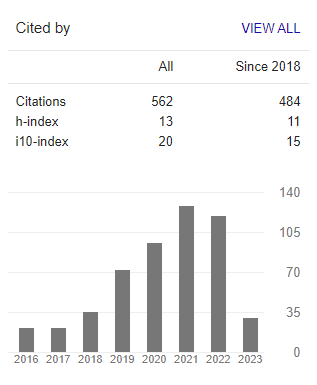EKONOMI POLITIK PENGEMBANG GAME LOKAL: Spasialisasi dan Ekspansi Bisnis PT Git Solution dan Noobzilla di Yogyakarta
Abstract
This research highlights the dynamics of the development of the gaming industry in Yogyakarta. This study uses a political economy approach and will focus on one aspect of the political economy in Vincent Mosco's perspective, spatialization. The findings of the study found that the two-game developers in Yogyakarta had different characteristics, both resources, to ways to gain profits. This difference determines each developer to expand their business. PT GIT Solution expanded its business by forming GIT ALLIANCE, while Noobzilla grew its business by creating products (games) that were easier to port. The role of government in the game industry nationally and locally showed by BEKRAF and JDV. Even so, this role is considered not optimal in shaping the ecosystem of the gaming industry. This phenomenon is indicated by the support that is not comprehensive to other sectors (e.g., publishers). There is a lack of specific regulations related to the gaming industry that support the development of the local gaming industry.
To cite this article (7th APA style):
Wahyuono, J. A. (2019). Ekonomi Politik Pengembang Game Lokal: Spasialisasi dan Ekspansi Bisnis PT Git Solution dan Noobzilla di Yogyakarta [The Political Economy of Local Game Developer]. Journal Communication Spectrum, 9(2), 125-142. http://dx.doi.org/10.36782/jcs.v9i2.1954Keywords
References
Adiputra, W. M. (2018). Jurnalisme Game dan Membaurnya Konten Media: Studi Kasus the Lazy Monday, Gamebrott dan Playverse. Journal Communication Spectrum, 8(2), 166-189
Anwari, F. N. (2014). Menengok kembali aktivitas developer game Indonesia sepanjang 2014!. Duniaku.com.https://duniaku.idntimes.com/game/konsol-pc/febrianto-nur-anwari/kaleidoskop-developer-game-indonesia-2014.
Doyle, G. (2002). Understanding Media Economics. Sage
Dyer-Witheford, N. & Sharman, Z. (2005). The Political Economy of Canada's Video and Computer Game Industry. Canadian Journal of Communication, 30, 187-210
Fahmi, M. (2017). Sisi gelap industri game di Indonesia (Bagian 2) – Dipecat Jam 4, Diusir Jam 5'. TechinasiaID.https://id.techinasia.com/kumpulan-sisi-gelap-bekerja-di-industri-game-indonesia-bagian-2.
Haryatmoko (2007). Etika Komunikasi (Manipulasi Media, Kekerasan, dan Pornografi). Kanisius
Hidayat, D. N. (2000). Pers dalam kontradiksi kapitalisme orde baru. Dalam Hidayat, D. N (ed.). Pers dalam “Revolusi Mei” : Runtuhnya Sebuah Hegemoni. Gramedia
Lefebvre, H. (1979). Space: Social Product and Use Value. Dalam J. Freiberg (ed.) Critical Sociology: European Perspectives (hal. 285-295). Irvington Publishers.
Mosco, V. (1996). The Political Economy of Communication: Rethinking and Renewal. Sage
Newszoo (2015). Newzoo Summer Series #21: Indonesian Games Market.https://newzoo.com/insights/i nfographics/newzoo-summer-series-21indonesian-games-market/
Newszoo (2016). The Global Games Market Reaches $99.6 Billion In 2016, Mobile Generating 37%. https://newzoo.com/insights/articles/glo bal-games-market-reaches-99-6-billion2016-mobile-generating-37/
Suryanto, A. (2015). Game Indonesia bisa bersaing dengan luar negeri. Merdeka.https://www.merdeka.com/khas/gameindonesia-bisa-bersaing-dengan-luarnegeri-wawancara-andi-suryanto.html.
Yuwono, A. I. (2009). Ekonomi Politik Industri Video Game. http://ardianindro.wordpress.com/2009/ 04/01/ekonomi-politik-industri-videogame/
Yuwono, A. I., Simatupang, G. R. L. L. & Salam, A. (2018). Pewujudan dan penyerapan Pemain dalam Video Game. Journal Communication Spectrum, 8(1), 94-112.
Zhao, Y. (2008). Communication in China: Political Economy, Power and Conflict. Rowman & Littlefield Publishers.
Refbacks
- There are currently no refbacks.

This work is licensed under a Creative Commons Attribution 3.0 License.
Indexed by:
Archived in:
Listed in:
INTERNATIONAL ASSOCIATION FOR MEDIA AND COMMUNICATION RESEARCH

















